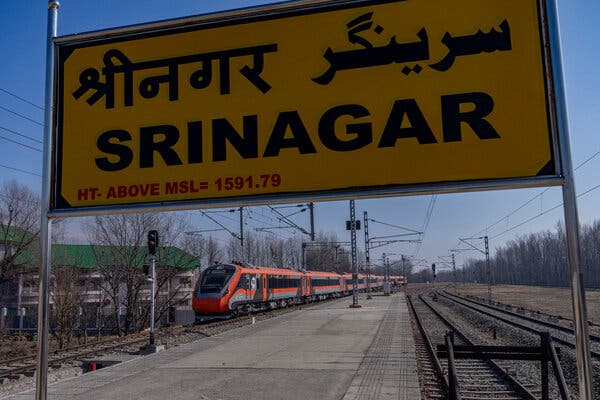After decades of intricate engineering challenges and substantial financial investment, Kashmir has been finally linked to India’s rail network, integrating the Himalayan region by train.
The railway connection, inaugurated recently, fulfills a vision that dates back to the British colonial period. Indian authorities hail the project as a transformative development for the often turbulent region, achieved by overcoming difficult terrain and complex political obstacles. Nevertheless, many residents of Kashmir view the railway less as an economic benefit and more as a means for the central government to reinforce its influence over the area.
The official launch of the rail link faced multiple postponements, including delays caused by a terrorist incident in late April on the Indian-controlled side of Kashmir, which triggered several days of violent clashes between India and Pakistan.
Stretching roughly 170 miles, the Udhampur-Srinagar-Baramulla rail corridor was constructed at an estimated cost of $4.4 billion. The route traverses some of the planet’s most scenic yet challenging landscapes, featuring one of the tallest railway bridges worldwide and a tunnel nearly seven miles in length piercing a mountain range.
Officials emphasize that the rail line will enable Kashmir to benefit from India’s consistent economic expansion and significantly enhance connectivity with the rest of the country. Until this project, the region’s sole land access was a single highway frequently obstructed by heavy snowfall during winter months.
“This is going to be a game-changer,” said Naveed Hassan, a 28-year-old local entrepreneur. “Tourists can now travel directly from Delhi, and our businesses are expected to thrive.”


0 Comments
No comments yet. Be the first to comment!